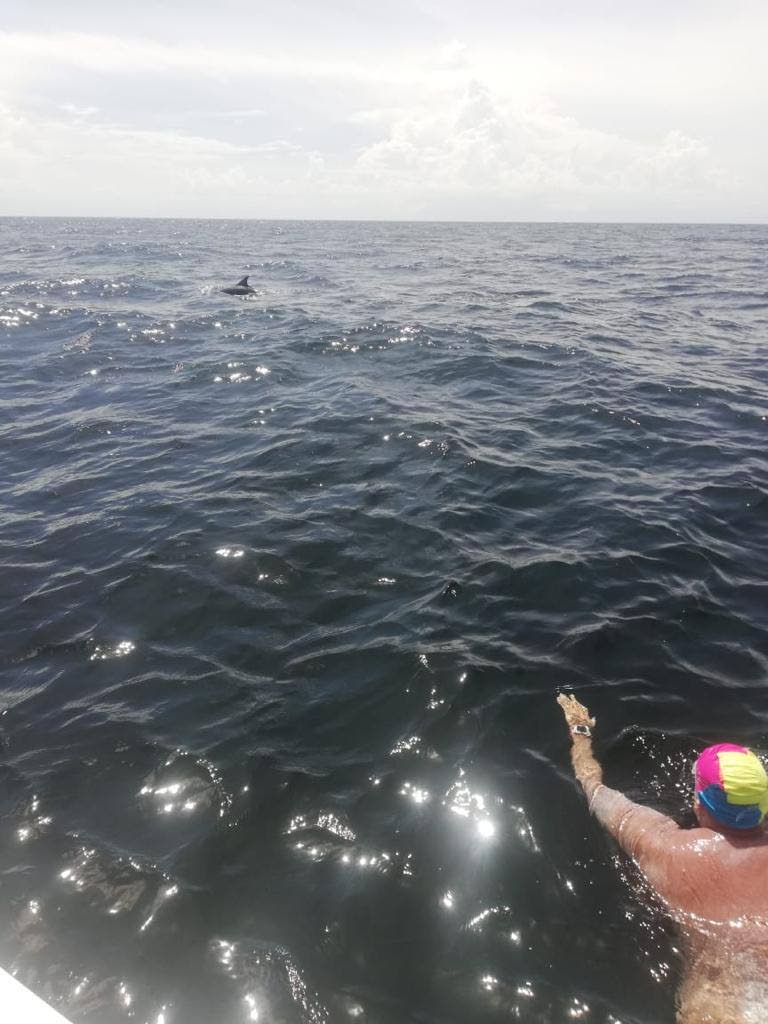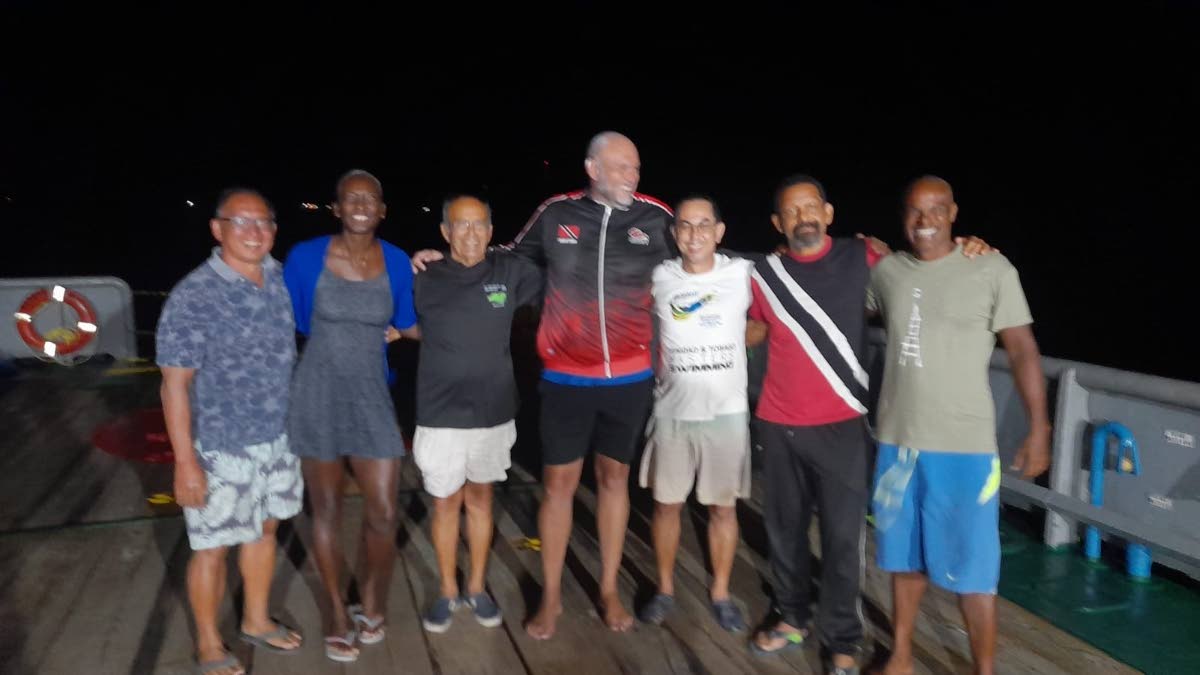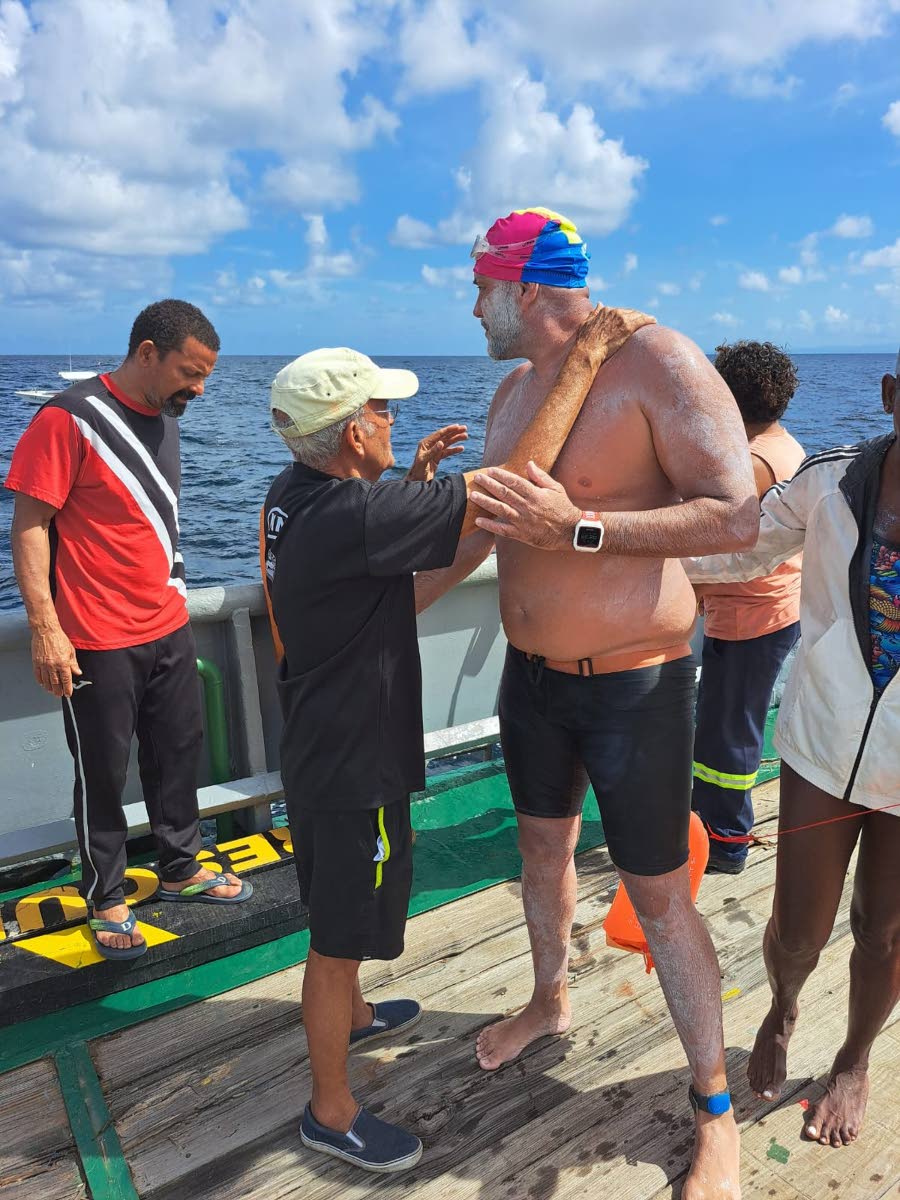Two islands, four crazy swimmers

THE “four crazy swimmers with very low profiles”, who tried to swim from Tobago to Trinidad on September 17, began an arduous journey before calling it quits after ten exhausting hours and 28 kilometres of open-water endurance.
But William Carr, Tobagonian John Procope, Roger Watts and Patrick Lee Loy were not the first swimmers ever to have undertaken this courageous test.
Carr said it has been “proven” that a slave escaped his captors in Tobago and successfully swam to Trinidad in the 1700s.
He also highlighted Grande Riviere resident and open-water swimmer Raymond La Croix, who had tried the distance five times previously, and supposedly achieved the feat on his final attempt some years ago.
La Croix, who still lives there, served as one of Carr’s main motivators for the inter-island trek.
Carr said, “Raymond has been very helpful to me. His experience in the lead-up to this swim was invaluable.
"I attempted it once and failed, but learned a lot. Knowing the challenges we faced, credit has to be given to him.
“Attempting this swim was never about credit and who did it first, but pushing yourself to another level of grit.”
And that they did.
After their initial plan to make the 35.4km swim in March 2021 was cancelled owing to pandemic restrictions, the team resumed training in November and set September 17, 2022 as the new date.
They wrote to the health ministry in November and were allowed to train from 6-8 am daily. They did physical events and cold-water swims, among other gruelling tests, to prepare for their inter-island swim.
Carr, Watts and Lee Loy travelled to Tobago monthly to train with Procope to ensure they were equally ready. They also did open-water swims there to acclimatise. Besides training, they ensured a proper support and logistics team was on hand to help.
The Friday morning before they set off, the four swimmers did a trial swim on the course, starting from Rockly Bay, Lowlands, in “near-perfect” conditions.
After reaching four kilometres out, with no undercurrent, they joked about continuing, considering the conditions, but there was no marine support that day.
After a sleepless night, the quartet hit the dark, chilly waters once more at 3 am on Saturday, en route to Trinidad.
Carr said, “We reached the start point as planned and the wind was incredibly high. I could tell other swimmers were concerned, but we had no window; everybody was ready. Although we questioned the safety, everything was in place; we had to go.
“We battled those waves from 4-8 am. We took a serious beating. The distance we achieved in half-hour on Friday, we took about 90 minutes to do it on Saturday. At 5.30 am, I realised we should have been further.”
Because of the rough water, they missed their first feeding (after one hour). They got their second feeding a bit late because their rations were frozen.
Not too long after, one of the swimmers cramped up and was taken out for a rest. The medical team did not allow him back into the water.
Three hours in, the fatigue kicked in, Carr said. The winds died down in the fourth, the water got calmer and the three remaining swimmers got into rhythm. Trinidad was in sight.
“But my GPS showed that we (had) only covered 15km, and that was way too slow for us. At that stage, we should (have) at least covered 20km already.”
They shifted their southerly swim to southwest, which avoided the swells hitting them directly. Their speed picked up.
However, a vacuum created by “the shallows” (a passage of water between an underwater water mountain and Tobago) turned the tides for the trio.
After six hours, they had swum 20km, just over half the distance between the islands.
“We were halfway there, but still along the coast of Tobago. We had to ride the vacuum, and tried to fight it about two hours, until eight hours in, and didn’t make any progress. Into hours nine and ten, if I moved 300m forward, that was plenty, based on the GPS. Thankfully, we were well hydrated,” Carr said.
After ten intense hours battling the unforgiving open-water elements over 28km, they decided to call it off, since they “didn’t really move” in the final two hours.
This was Carr’s longest ever swim.
“The plan was to go for 15 hours, and wherever we reached after that, we would have called it quits.
"But when we realised where we were after ten hours, the swimmer asked me if I wanted to continue, and that they would stick with me. I wanted to say, ‘Yes’ – but at what cost?
“It was a tough decision. But I did see the relief on the guys. Even the support boat knew our position and were also relieved to hear us stop. It was the right decision.”
In the last hour, mentally and physically, Carr said, the team was in a good place, but the current kept working against them.
“We had a pod of dolphins swim with us for the last hour. That was the most memorable memory... just knowing we were in the pod, we knew they were either here to tell us something or protect us, and somehow that motivated me.”
Most of the swimmers and support crew are part of the TT Aquatics and Trinity Masters swim clubs. Carr said without every member present on the support boats, the swim would not have been possible.
He does not rule out another inter-island attempt.
“A nice window (to swim in) is in August and September, for north sea conditions. And the best moon would be first or last quarter.
"The storm (Fiona) ahead of the north probably did create the wind flow that day.
“The next time we have to do it, we need a little more window. If the conditions are not right, we defer it.
“But the impact these four swimmers, with very low profiles, have made with this attempt –we have received so much support from people in TT and throughout the world. I’m motivated to do it again. It’s invaluable.”




Comments
"Two islands, four crazy swimmers"